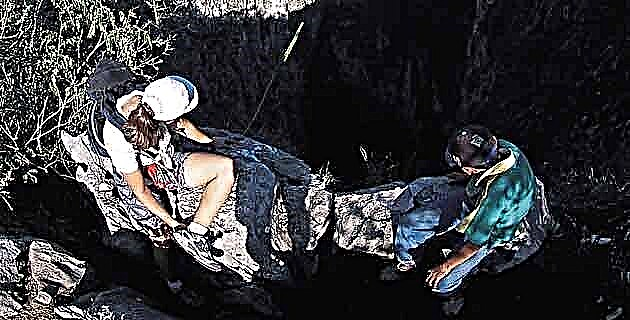
Contemporary with dinosaurs, ammonites also became extinct millions of years ago. They inhabited different marine environments and their footprints can still be found in different places on the planet.
Contemporary with dinosaurs, ammonites also became extinct millions of years ago. They inhabited different marine environments and their footprints can still be found in different places on the planet.
These cephalopods with an external shell had a rapid and brief evolution. They lived from the Devonian, in the Paleozoic era, to the Mesozoic. Thanks to their genetic flexibility, they were able to adapt to different living conditions: the same in the deep ocean as in the open sea and in areas surrounded by continental land.
At present, their closest relatives are found in organisms such as the Argonauts and the Nautilus, but unlike the former, they do not have an extensive presence on the planet.
One of the beings most studied by paleontologists are precisely ammonites. For researchers they work as an excellent indicator of time, so they are known as the Rólexes of paleontology. Likewise, because it is possible to find their fossils scattered throughout the world, they are a suitable world reference for missing life forms. Furthermore, its wide geographic presence helps scientists to make correlations between various points on Earth.
If in human time a million years is an enormous age, in geological time it is equivalent to a very short period. These changes experienced from one stage to another are extraordinary indicators to determine the age of the rocks, since these can be classified from the records left by the ammonites, whose fossils are accompanied by vestiges that reflect specific life conditions.
Paleontologists do not give the exact number of years, but from their studies it is possible to know which creatures lived first, which ones later and to which stage and environments they correspond.
Thanks to the great wealth of sedimentary rocks in Mexico, there are fossils of these beings that date from 320 million to 65 million years. Its study in our country has been carried out intermittently. The first monographic studies that constitute the scientific basis about ammonites in Mexico are due to the Swiss researcher Carl Burckhardt. Later projects of some Germans, Americans and French followed.
In the twentieth century, the investigations of various scientists have given a new impetus to this task, since the vast Mexican territory still contains many enigmas, therefore scholars still have much to explore: there are marine sedimentary rocks in the Sierra Madre Oriental , in Baja California and in the Huasteca, among other places.
To detect ammonites, we always start from previous studies, not only paleontology, but geology in general. With a geological map in hand, the group of researchers leaves for the field. This map can be used to have a first approximation to the age of the rocks.
Already on the ground a set of rocks is selected, from which a sample is taken. After crushing the stone, the fossil is found; But it is not only a matter of splitting the rocks, removing the ammonite and disregarding the rest, because in these investigations we can find remains of plants or invertebrates that reveal other palaeoenvironmental marks that must be deciphered to obtain a panoramic explanation.
Therefore, in general, the exploration groups are made up of a multidisciplinary team of professionals. In this way, each specialist contributes his knowledge to explain particular aspects of each investigation.
In the field, scientists obtain answers thanks to the location of the fossils, but it is also true that when there are none, that also becomes data, and then the challenge is to know why there are no fossilized remains there.
It is not that the stones do not speak, but that they have been silent for millions of years. A very common question among people is: "What is that for?" Researchers then become popularizers by explaining the importance of understanding the origin and transformations of life.
Because of its color and shape, ammonites are attractive to the eye. Despite the fact that the legislation protects paleontological heritage, in some markets fossils are sold as ornaments and it is not taken into account that this commercialization causes the loss of valuable scientific data.
Source: Unknown Mexico No. 341 / July 2005











